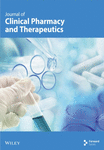An evaluation of the antioxidant activity of a standardized grape seed extract, Leucoselect®
Abstract
Coronary Artery Disease (CAD) remains the major cause of mortality and morbidity in the Western World. The oxidation of low-density lipoproteins (LDLs) by free radicals is associated with initiation of atherosclerosis and therefore, development of CAD. LDLs are protected from oxidation by antioxidants and in times of antioxidant deficiency are more likely to be oxidized. Hypercholesterolaemic patients are at a higher cardiovascular risk and may, therefore, require more antioxidant protection. Increased consumption of red wine containing antioxidants is thought to account for the lower incidence of CAD in Mediterranean countries. Red wine, although rich in antioxidants, is not suitable as routine therapy for prevention of CAD. Objective: To evaluate the effects of a capsule formulation of an antioxidant polyphenolic extract of grapes on serum total antioxidant activity and vitamin C and E levels. Method: A single-blinded randomised, placebo-controlled cross-over study was undertaken in 20 young volunteers. Subjects were given two capsules containing 300 mg of grape procyanidin extracts (Leucoselect™-phytosome®) or placebo daily for 5 days. Blood samples were taken at the start of the study and end of the study and assayed for antioxidant activity and vitamins C and E levels. After a washout period of at least 2 weeks, the study was repeated with the second treatment. Results: The extract had no effect on serum vitamins C and E levels but increased serum total antioxidant activity (TAC). On day 5, TAC increased from 408·1±22·9 to 453·3±453·3 μmol/l trolox equivalents 1 hour postdose. Conclusion: The capsules increased serum antioxidant activity but the longer-term clinical implications need to be assessed in further randomised clinical trials




